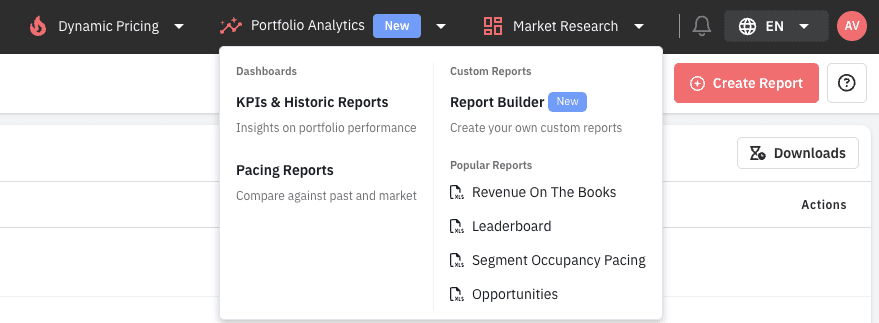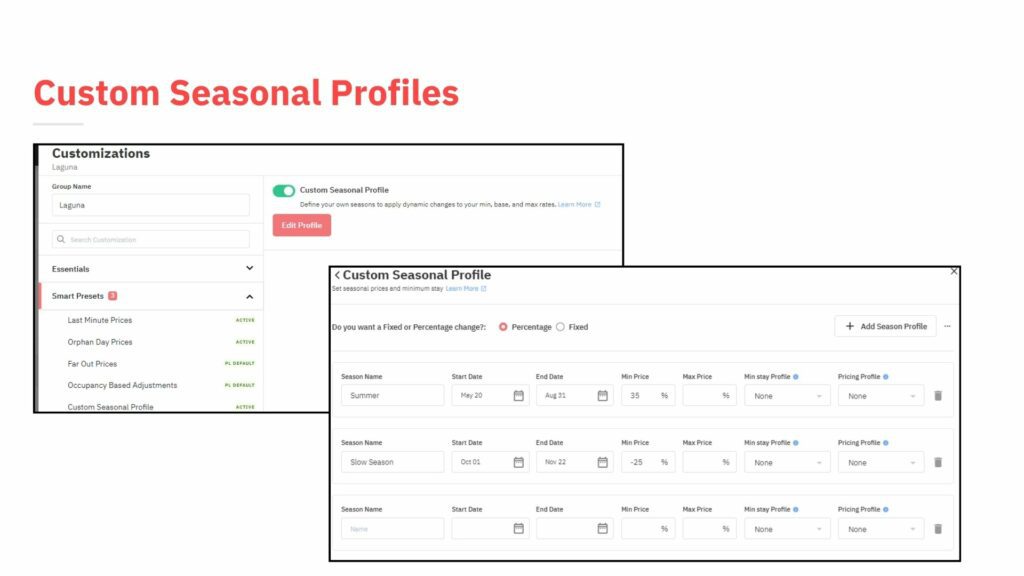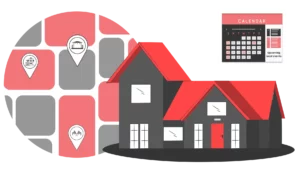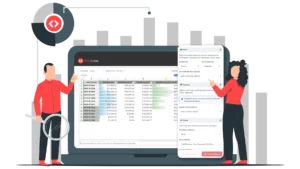Updated: October 16, 2024
As we transition into the shoulder and slow seasons, it’s crucial to fine-tune your strategies to make the best of the ‘Slow’ Season. In our recent webinar titled, “Live Walkthrough: Setting up PriceLabs for the Slow Season“, we shared key insights on making the most of these quieter months. Curated especially for Property & Revenue Managers handling large portfolios of 50 or more listings, here are 6 tactics to optimize occupancy and revenue in the slow season.
Adapting to Seasonal Market Changes: 6 Tactics for Success
October marks the beginning of the slower booking periods for many markets. With economic uncertainties affecting travelers’ plans this year, it’s essential to be proactive and stay ahead. PriceLabs’ tools can help you navigate these fluctuations with informed data-driven insights that can help you optimize occupancy.
1. Understand Market Occupancy Patterns
The first step towards approaching the slow season is to track how occupancy and ADR trends have shifted in the past years. This would give you and idea on how to refine pricing models and prepare for potential mid-season adjustments to ensure that you have a clear understanding of your market in this season. Start by,
- Analyzing Trends & Competitors: Monitor local occupancy trends and compare them with previous years. This insight helps you set the right pricing and minimum stay requirements.
- Adjusting Pricing: Price strategically for holidays or events and adjust according to demand.
Core Metrics to Monitor
Focusing on the right Key Performance Indicators (KPIs) will guide you in assessing your performance during this transitional period. Be sure to track,
- Occupancy Rate – occupied units divided by the total number of units available X 100
- ADR (Average Daily Rate) – total price divided by number of nights
- RevPAR (Revenue Per Available Room) – Occupancy rate X ADR
- LOS (Length of Stay) – the number of nights a booking is for
- Booking Window – days between the booking and first stay date
PriceLabs Tools to Use:
- Get a high-level overview of your market —track whether prices and occupancy are increasing or decreasing with the Neighborhood Data tool.
- Generate reports on specific metrics and find underperforming properties with our new Report Builder free with Portfolio Analytics.
- Pacing Reports: Track monthly occupancy and ADR trends to see how you measure up against local competition with Pacing reports.
- Create Custom Comp Sets to analyze competitor pricing and occupancy trends with Market Dashboards.


2. Communicate with Property Owners
Share your strategy and reassure your owners by showing them how you plan to optimize occupancy during the slow season
- Being Proactive: Regularly update owners with market trends and align revenue expectations to foster trust.
- Utilizing Occupancy Data: Share historical data to help owners anticipate slower periods, keeping them prepared and confident in your management.
3: Leverage PriceLabs Toolkits to Gain Finer Control Over Seasonality Settings
Adjusting pricing and minimum stay requirements across multiple listings can be time-consuming and difficult to handle efficiently.
- Save time by automating changes across your portfolio with Custom Seasonal Profiles to quickly and easily control and adapt parameters based on seasonal needs and specific events.
- Auto Adapt to Seasons with Min Stay & Pricing Profiles: Min Stay Profiles & Pricing Profiles can help you link stay restrictions & pricing customizations to different seasons, adapting to changing demand throughout the year.


Make changes across your portfolio to quickly and easily control and adapt parameters based on seasonal needs and specific events.
4. Consider Discounting Strategies
Implementing thoughtful discounting strategies can significantly boost occupancy during the slow season. Here are some effective approaches
- Attract Repeat Guests: Offer loyal customers discounts to build relationships.
- Early Bird & Last-Minute Discounts: Boost occupancy by encouraging early reservations or last-minute bookings.
- Bundle Offers & Seasonal Promotions: Design packages that include extras, like free cleaning or local experiences, adding value and encouraging longer stays.
5. Optimize outside of PriceLabs
Take advantage of the slow season to optimize your overall visibility and positioning in the market.
- Focus on SEO: Improve your listing’s search engine optimization to boost your visibility for low-season bookings.
- Evaluate OTA Listings: Ensure your OTAs align with your target audience, and list on multiple platforms for greater reach.
- Prepare Properties: Use this period for upgrades or maintenance, which will improve guest experiences in the future and drive better reviews.
6. Regular Market & Performance Reviews
Regularly evaluating your market position and performance metrics is essential for sustained success.
- Gather insights from your Portfolio: Keep tabs on your portfolio’s performance with KPIs and historical reports from Portfolio Analytics to identify trends and areas for improvement.
- Benchmark with Market Pacing: Regularly compare your performance to local trends and competitor rates to stay competitive.


Bottom Line
As we enter the slow season, take the opportunity to review your market strategy regularly. Be proactive – rely on data-driven insights and historical trends to understand your market, be proactive in communication with your owners, and adjust your pricing strategies, to keep your occupancy rates steady and revenue on par.








